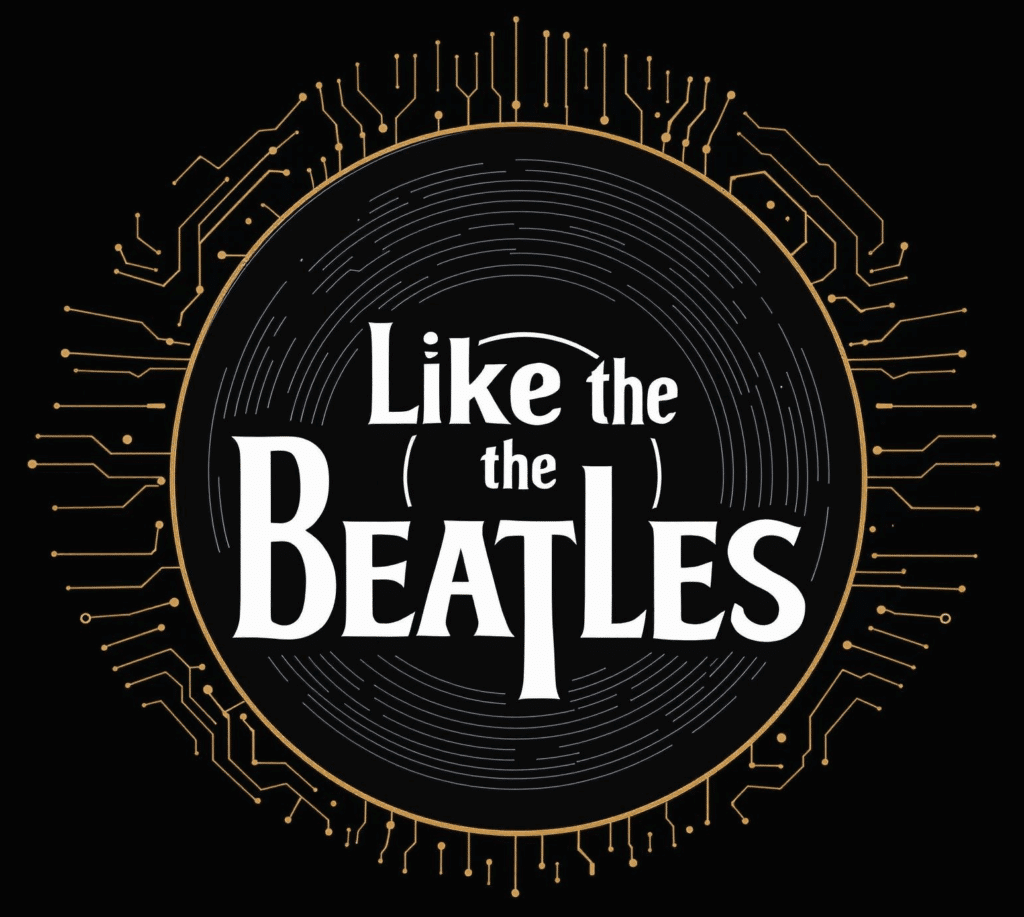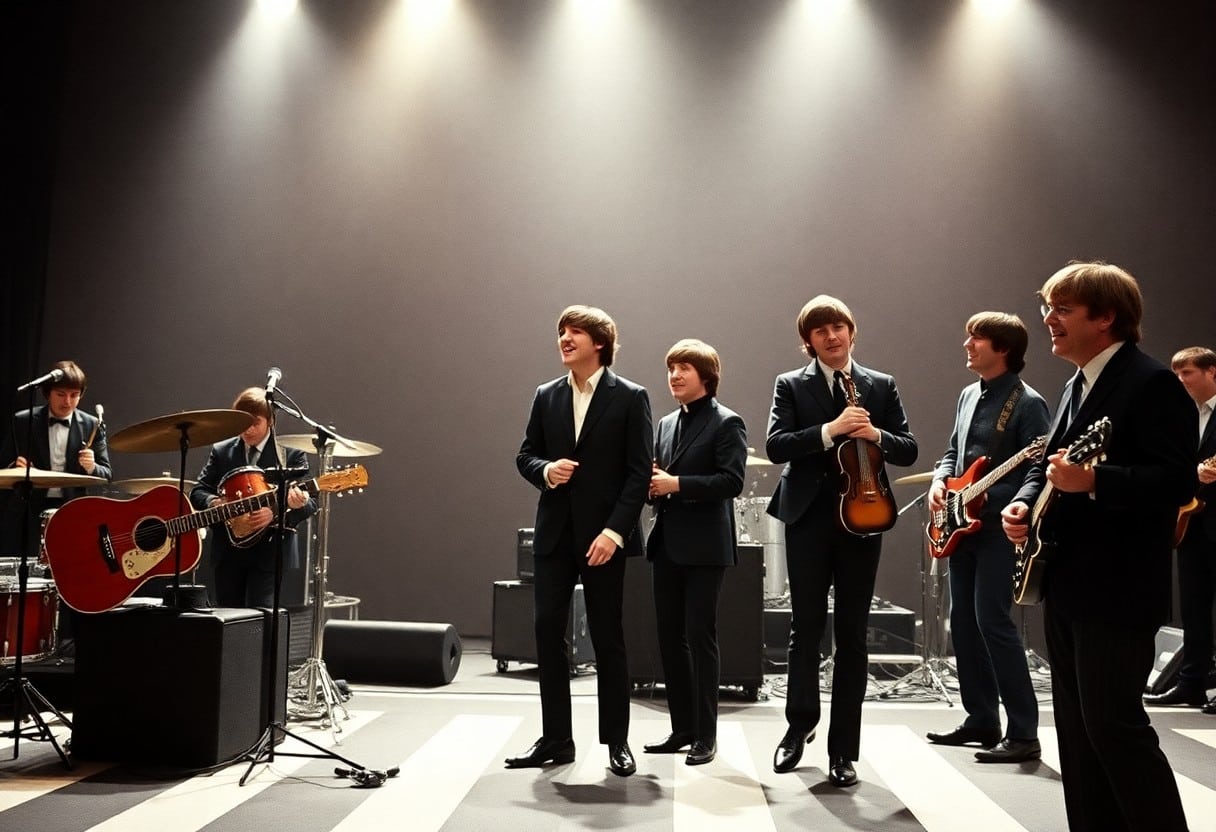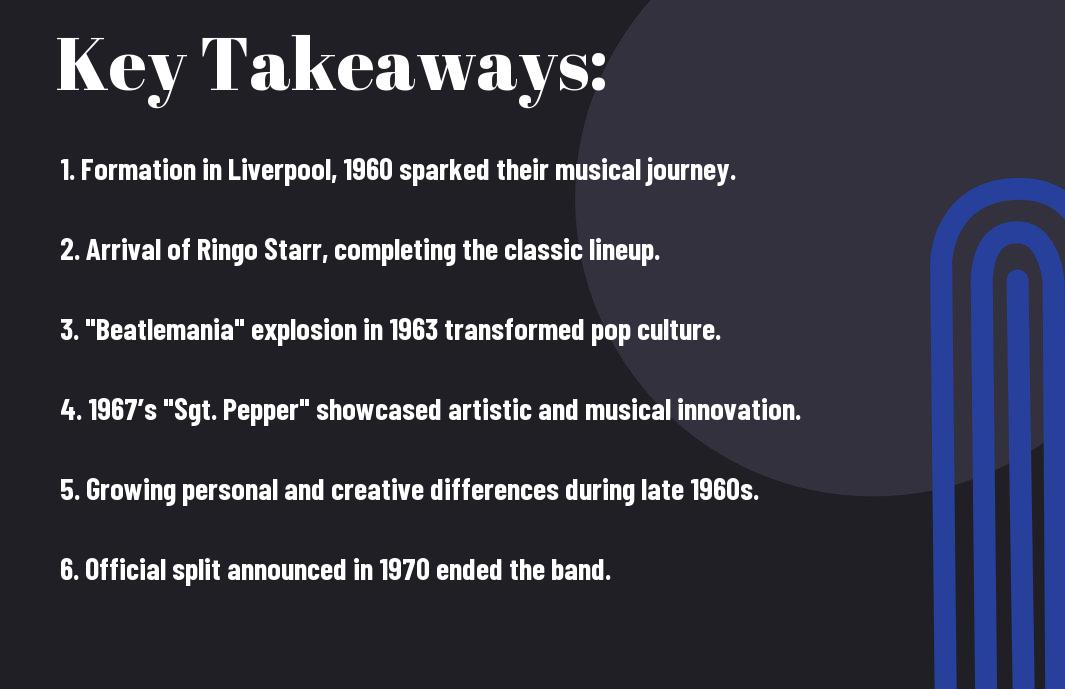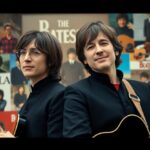Moments of creativity, conflict, and evolution shaped the iconic journey of The Beatles. From their early days in Liverpool to their meteoric rise in the global music scene, each pivotal event contributed to their legacy. I invite you to explore the defining moments that not only propelled them to superstardom but also led to their eventual split. You’ll find that understanding these key instances can give you greater insight into the band’s dynamic and lasting influence on music and culture.
Formation of The Beatles
Your journey into the world of The Beatles begins with their formation, a tale of passion and talent that would reshape music forever. In the early 1960s, four young men from Liverpool came together, driven by their love for rock and roll. Their unique blend of creativity, charisma, and ambition laid the groundwork for their legendary status in music history.
The Quarrymen and Early Influences
Any comprehensive account of The Beatles must include their early days as The Quarrymen, a skiffle group formed by John Lennon in 1956. Inspired by the likes of Elvis Presley and Chuck Berry, this formative phase saw Lennon experimenting with musical styles and gathering a small following. It was during these initial steps that the seeds of their eventual iconic sound were sown.
The Recruitment of Key Members
Quarrymen marked the beginning of something special, but it wasn’t until they started recruiting key members that their potential truly emerged.
With the addition of Paul McCartney in 1957, the group’s dynamic underwent a significant shift. Soon after, George Harrison joined as the lead guitarist, showcasing exceptional talent that would become central to their sound. As they sought a drummer, Ringo Starr completed the lineup in 1962, bringing his distinctive style and charm. The chemistry among these four, united by their ambition and creativity, would spark a revolution in the music scene, ultimately leading them to global fame.
Breakthrough and Popularity
Clearly, the Beatles experienced a meteoric rise in popularity that transformed them into cultural icons. Their innovative sound, combined with charismatic public personas, captivated audiences and led them to break new ground in the music industry. From their first album to their global tours, the Beatles not only shaped the musical landscape but also defined a generation’s spirit and style.
The Release of “Please Please Me”
Any discussion of the Beatles’ breakthrough must include the release of their debut album, “Please Please Me,” in March 1963. This album showcased their signature harmonies and catchy melodies, establishing them as a force to be reckoned with in popular music.
The Beatlemania Phenomenon
Among the various aspects of their rise to fame, the phenomenon known as Beatlemania truly illustrated the Beatles’ impact on society. Fans became obsessed with the band, leading to frenzied crowds and unprecedented levels of fan engagement.
Another significant aspect of the Beatlemania phenomenon was the intense excitement that surrounded the band during the early 1960s. Fans exhibited such uncontrollable enthusiasm that concert venues were often overwhelmed with screaming audiences, and the band’s live performances became notorious for their chaotic and electric atmosphere. The boys often struggled to hear themselves play, and this frenzy not only magnified their popularity but also caused concerns for their safety. As they toured globally, the Beatles became more than just a band; they emerged as a cultural revolution, influencing fashion, social norms, and attitudes, proving that their music could stir emotions and change lives.
Creative Evolution
After their initial success, The Beatles underwent a profound creative evolution that shaped their musical identity. They ventured beyond the pop motifs of their early songs, delving into more complex themes and innovative techniques. This transformation not only influenced their sound but also set new standards for popular music, paving the way for future artists to explore the depths of their creativity.
Experimentation in the Studio
Between 1965 and 1970, The Beatles embraced the studio as an instrument in itself, experimenting with unprecedented techniques. Their collaboration with producer George Martin allowed them to manipulate sound in ways previously unseen, incorporating unconventional instruments and multi-layered arrangements to create iconic tracks that redefined music production.
Pioneering Album Concepts
For The Beatles, the concept of an album transformed from a mere collection of songs to a cohesive artistic statement. With albums like *Sgt. Pepper’s Lonely Hearts Club Band*, they challenged traditional notions of storytelling, blending music, visuals, and themes into a unified experience that captivated listeners.
Pioneering album concepts allowed The Beatles to transcend the traditional boundaries of music, as they began to craft albums that were not just collections of singles, but narrative-driven experiences. This approach culminated in the seamless flow of tracks and the exploration of varied musical styles within a single record, creating a profound connection with their audience. Albums like *The White Album* and *Abbey Road* highlighted their artistic depth, encouraging listeners to engage with the album in its entirety rather than isolating individual hits. This innovative vision influenced countless artists and remains a staple in the music industry today.
Cultural Impact
Unlike any other band before them, The Beatles became a global phenomenon, shaping not just music but the very essence of popular culture. Their innovative sounds and engaging personas transformed the music industry and set the standard for rock bands worldwide. As cultural icons, they played a pivotal role in challenging conventional norms, influencing generations with their ideas, lifestyles, and artistic expressions.
Influence on Music and Fashion
To say The Beatles influenced music and fashion tremendously would be an understatement. They revolutionized songwriting, merging genres and experimenting with sounds that redefined popular music. Their iconic styles, from mop-top haircuts to colorful suits, set trends that defined the 1960s, proving that a band’s image could be as impactful as their music.
The Beatles and the Counterculture Movement
Among the many movements of the 1960s, The Beatles became a powerful emblem of the counterculture, championing peace, love, and self-expression. Their music resonated with a generation that sought to challenge societal norms and promote acceptance and change.
And as *pioneers of the counterculture movement*, The Beatles used their platform to speak against war and advocate for *social justice*. Songs like “All You Need Is Love” and their *relationship with figures like Maharishi Mahesh Yogi* reflected their desire for *spiritual enlightenment* and unity. Their impact was profound; they not only inspired movements for change but also encouraged *individualism and creativity*, urging fans to question authority and embrace their identities. The band’s legacy continues to fuel *conversations about peace and social responsibility* even today.
Major Conflicts
For The Beatles, internal conflicts were as significant as their immense success. As their fame grew, tensions among the members intensified, stemming from creative differences and personal grievances. These disagreements ultimately played a pivotal role in their eventual split, showcasing that even the best partnerships can fray under pressure.
Personal and Artistic Differences
To navigate their evolving artistic visions and personal lives, each member of The Beatles began to seek individual expression. John Lennon and Paul McCartney, once united in their songwriting, found themselves at odds as they explored distinct musical directions, leading to a rift that threatened their collaboration.
The Influence of Managers and Yoko Ono
Across the changing landscape of The Beatles, outside influences, including their managers and Yoko Ono, emerged as significant factors in their dynamics.
Consequently, Yoko Ono‘s presence in John Lennon’s life deeply affected the band’s chemistry, as she began to participate in studio sessions and influence Lennon’s decisions. This shift caused resentment among the other members, particularly Paul McCartney, who felt sidelined. Moreover, the band’s management struggles after Brian Epstein’s death led to further discord, as each member grappled with differing visions for the future. These external pressures exacerbated the internal conflicts, ultimately pushing The Beatles further apart.
The Final Years
All good things must come to an end, and for The Beatles, the final years were marked by both artistic achievements and personal struggles. Their groundbreaking album “Let It Be” encapsulated a sense of culmination, as it brought their musical journey to a poignant close. The band’s tumultuous dynamics became increasingly evident, foreshadowing their eventual split, which shocked fans worldwide and changed the landscape of music forever.
Let It Be and the Last Public Performance
The last public performance of The Beatles took place on the rooftop of Apple Corps in January 1969, capturing a raw and unfiltered moment of their artistry. The impromptu concert was a powerful reminder of their unmatched energy and creativity, even as tensions within the band began to simmer. This event, coupled with the release of the album “Let It Be,” underscored their legacy while hinting at the conflicts that would soon lead to their separation.
The Fallout after the Split
Years after The Beatles disbanded, the fallout was felt not only within the group but across the music industry. Public disputes arose, often taking the form of legal battles over royalties and creative control. Tensions escalated, particularly between John Lennon and Paul McCartney, each vying for a new artistic identity. However, amidst the discord, the solo projects that followed showcased the individual talents of the members, with some achieving remarkable success, thus reshaping popular music. This period, filled with both conflict and creativity, ultimately highlighted the complex relationships that defined one of the world’s most iconic bands.
Hence, The Beatles’ split marked not only the end of an era but also the dawn of new musical explorations for its members. Lennon’s activism, McCartney’s ventures into pop melody, Harrison’s spirituality, and Starr’s pursuit of solo fame served as both a testament to their enduring legacy and a reflection of their personal growth. The devastating emotional strain came hand in hand with the emergence of each member’s unique sound, illustrating how their individual paths diverged dramatically while still echoing elements of their time together as one revolutionary force in music history.
Final Words
Conclusively, I believe that the defining moments for The Beatles began with their humble formation in Liverpool, leading to their seismic rise with hits like “Love Me Do” and the iconic Ed Sullivan Show appearance. Each phase of their journey, from groundbreaking studio experimentation to their eventual split after the “Let It Be” sessions, shaped not only their legacy but also modern music itself. You can see how their influence persists today, reminding us of the profound impact they made during their relatively short time together as a band.












